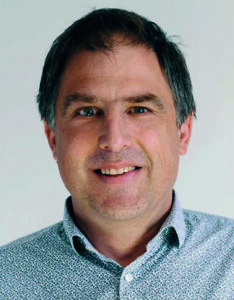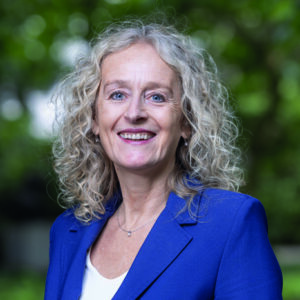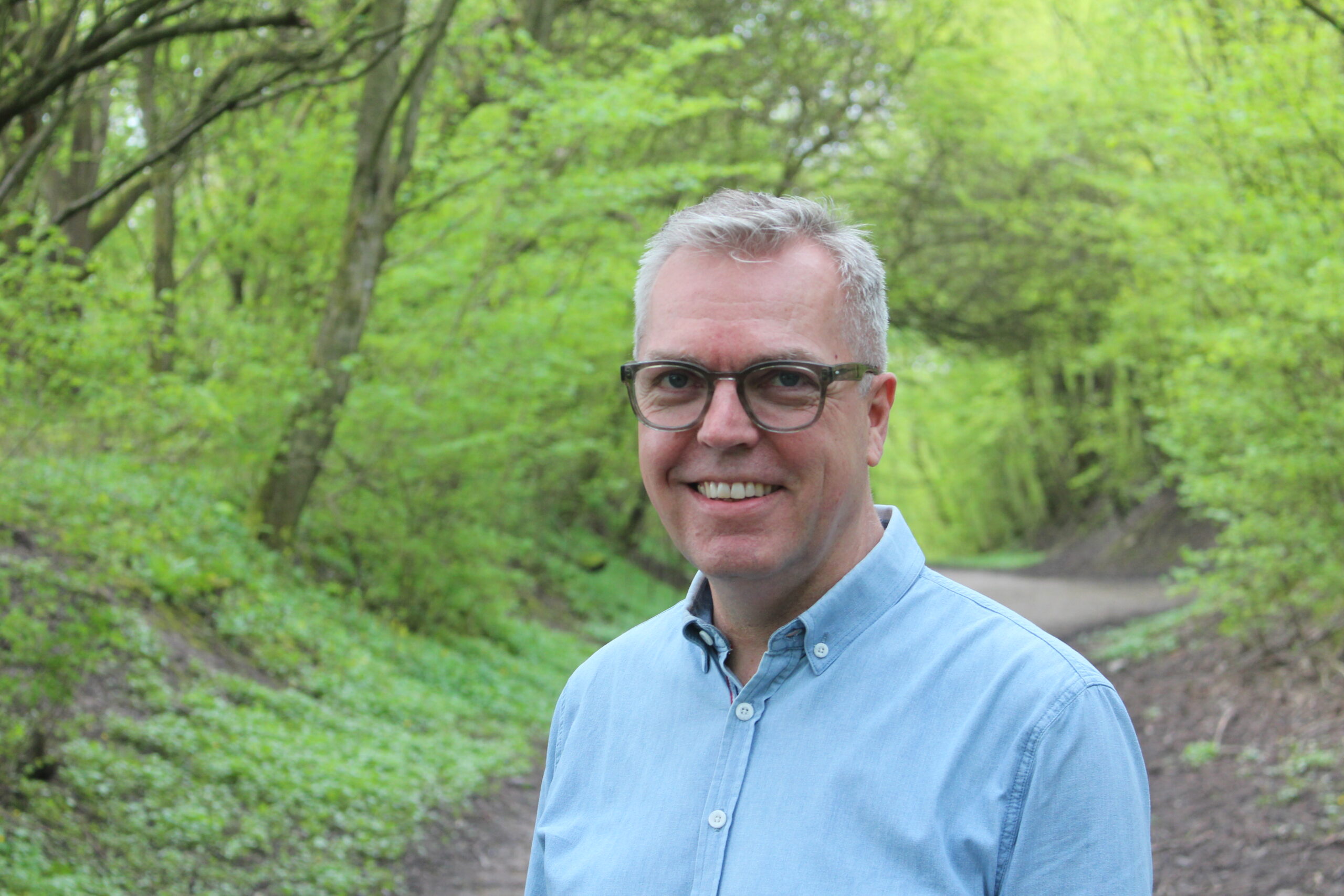People who are most in need of healthcare often have the worst access. Measures to reduce social and health inequalities include the European Pillar of Social Rights and a research project on “social vulnerability indices”.
Text: Dietmar Schobel
“Homelessness is probably one of the biggest risks to health. People who are without a good-quality, affordable place to live also have worse physical and mental health than the average population,” says Freek Spinnewijn, Director of the European Federation of National Organisations Working with the Homeless (FEANTSA). According to estimates, in the Member States of the European Union plus the UK at least 1,286,691 people are rough sleepers, in night shelters or in temporary accommodation. This figure has risen by about 44 percent in a few years (see also box: “Key statistics on homelessness” below).

“We also know that the average age of death of homeless people who die in a shelter or on the street is around 50,” Freek Spinnewijn adds. Therefore, providing everyone with good, safe and affordable accommodation is a very effective measure for achieving better health for vulnerable people and probably cost-effective, he believes. The FEANTSA director continues: “Every person has a right to health and to live in dignity. This was set out in the Universal Declaration of Human Rights passed by the United Nations in 1948, and it is also specified in the fundamental rights of the European Union.”
“Homelessness is probably one of the biggest risks to health.”
FREEK SPINNEWIJN, DIRECTOR OF THE EUROPEAN FEDERATION OF NATIONAL ORGANISATIONS WORKING WITH THE HOMELESS (FEANTSA)
The European Pillar of Social Rights aims to contribute to turning these policy documents into practice. This EU initiative was established in 2017, while Jean-Claude Juncker was President of the European Commission, drawn up as “the beacon guiding us towards a strong, social Europe that is fair, inclusive and full of opportunity”. It consists of 20 principles ranging from the lifelong right “to good education and training” for everyone and “protection from being very poor” through to the right “to a good-quality, affordable place to live” for everyone (see also box: “The European Pillar of Social Rights” below).
Putting words into action
But as the saying goes: the proof of the pudding is in the eating. How far have these well-meaning intentions from the EU Commission actually been put into practice? “Of course, that always depends on the current amount of political will at European and national levels at any given time,” responds Freek Spinnewijn. Nonetheless, one direct result of the European Pillar of Social Rights was the European Platform on Combatting Homelessness, which was established in 2021. Besides this, several Member States have already introduced their first strategies for reducing homelessness, or existing ones have been reworked.
“For example, countries such as Finland and Denmark, and to a certain extent Austria as well, are currently implementing the Housing First approach,” Freek Spinnewijn observes. This includes separating housing from social support. Homeless people have access to housing even if they don’t take up support to deal with their non-housing problems like substance abuse. In these countries and a few others, the number of homeless people has decreased almost continuously in recent years. However, there is still a steady increase on average in the EU as a whole. “The negative economic situation, inflation, migration and constant rise in costs for rented accommodation are among the most important reasons for this,” explains Freek Spinnewijn.
The most vulnerable groups in society
“Homeless people, together with people living with drug addiction and undocumented migrants, are among the most marginalised and vulnerable groups of society who also have the worst access to healthcare, not to mention prevention and health promotion,” emphasises Caroline Costongs, Director of Brussels-based EuroHealthNet, the umbrella association of national and regional organisations for health promotion and prevention in Europe.
In addition, there are numerous other population groups whose social situation makes them more likely to fall ill, and whose life expectancy is shorter. For example, families with three or more children and also single parents have a higher risk of being among the “working poor”, i.e. people who frequently cannot afford their rent and everyday outgoings despite having two or more jobs, due to low payment. “And we know that 24.3 percent of children under 18 years of age, in other words one out of four children or adolescents, are still living in poverty or at risk of poverty in the EU Member States. This is an alarmingly high number,” remarks EuroHealthNet’s Director.
Five spheres of activity

EuroHealthNet has determined five spheres of activity as the priority for reducing health inequalities due to social differences in income, education, living and working conditions. First and foremost are measures taken in early childhood and especially the reduction of child poverty. A second important field of action is work that is paid appropriately and does not harm health. Affordable living with access to green space and clean air in local surroundings is the third area. Healthy behaviour with sufficient exercise and a balanced diet is the fourth. Last but not least, EuroHealthNet has specified that making high-quality, affordable healthcare accessible to all population groups is essential.
One out of four children or adolescents in the EU are still living in poverty or at risk of poverty.
CAROLINE COSTONGS, DIRECTOR OF EUROHEALTHNET
“However, the current health system is frequently a factor that enlarges health differences rather than reducing them. This is because when people become patients, it is usually those with a higher income and higher education who receive the best treatment. In contrast, socially disadvantaged groups often receive worse therapies, or nothing at all,” Danish scientist Thomas Maribo points out. As a trained physiotherapist, Professor of Rehabilitation at Aarhus University and Research Director at DEFACTUM, a public research institute for the Central Denmark Region, he works on topics such as public health and social equality in health.
Identifying patients in a vulnerable situation

In a systematic review published in June 2025 by the European Journal of Public Health, Thomas Maribo worked with six colleagues to analyse 21 “social vulnerability indices (SVIs) for proactively identifying at-risk individuals in healthcare” from various countries. They comprise between three and 41 criteria. One of the results of this research work is a set of the five most relevant questions, which are currently being tested in practice. These questions aim to support medical professionals and members of other health professions in finding out systematically and relatively quickly whether a patient is in a vulnerable situation (see also box “Five questions for use in practice” below).
The current health system is frequently a factor that enlarges health differences rather than reducing them.
THOMAS MARIBO, PROFESSOR OF REHABILITATION AT AARHUS UNIVERSITY AND RESEARCH DIRECTOR AT DEFACTUM
“If this is the case, then members of the health profession should give special attention to these patients. After all, on average it is the poor and less educated who have an especially urgent need for medical treatment. If they receive this treatment, then that can make an important contribution towards reducing health inequalities between the better and worse off,” says Thomas Maribo.
SIX CRITERIA FOR HOMELESSNESS
FEANTSA, the European Federation of National Organisations Working with the Homeless, was set up in 1989 as the European umbrella organisation for non-profit services that support homeless people in Europe. FEANTSA has over 130 member organisations from 29 countries, including 22 Member States of the European Union. The definition of “homelessness” by FEANTSA is much broader than generally encountered, and comprises the following six criteria:
1 People living rough
2 People in emergency accommodation
3 People in accommodation for the homeless
4 People living in institutions, such as prisons or in-patient psychiatry hospitals
5 Homeless people living temporarily in conventional housing with family and friends, such as sofa surfers or people who find temporary refuge with relatives
6 People living in non-conventional dwellings due to lack of housing
Examples of “non-conventional dwellings” are tents, caravans, shacks, sheds and other structures built from salvaged materials. This also includes living in vehicles like cars or railway carriages.
Source: Based on Fondation Abbé Pierre/FEANTSA – Ninth Overview of Housing Exclusion in Europe 2024, page 16
THE EUROPEAN PILLAR OF SOCIAL RIGHTS
The European Pillar of Social Rights consists of 20 principles. These specify essential conditions for ensuring that everyone is enabled to attain their full potential for health and wellbeing. EuroHealthNet, the umbrella association of national and regional organisations for health promotion and prevention in Europe, has designed a Pillar Flashcard tool. It is intended to provide information on the European Pillar of Social Rights and to help public health professionals and decision-makers to contribute to its implementation.
FIVE QUESTIONS FOR USE IN PRACTICE
In an analysis of 21 social vulnerability indices (SVIs) as part of a review, the following five questions were established as being most important in determining if a patient is in a vulnerable situation:
1 Do you have difficulty understanding the (local) language?
2 Do you have someone who can help you with daily tasks if you need it?
3 Do you have someone to talk to if you have personal problems or need support?
4 Do you have problems making ends meet financially?
5 What is the highest level of education you have completed?
KEY STATISTICS ON HOMELESSNESS
200,138,400 households in the European Union
The population of the EU stood at 447.6 million people on 1 January 2023.
100%
17,812,318 households overburdened by housing costs
More than 40% of income spent on housing costs
8.9%
33,623,251 households living in overcrowded conditions
16.8%
13,809,550 households in arrears on their utility bills
Water, electricity, gas and heating
6.9%
1,286,691 last estimate of the number of homeless people
People living rough, in emergency accommodation or in accommodation for the homeless
0.3%
6,204,290 in arrears on their rent or mortgage repayments
3.1%
21,214,670 households experiencing financial difficulty in maintaining adequate housing temperatures
10.6%
31,021,452 households living in damp conditions
15.5%
24,416,885 households living in housing situated in particularly polluted areas
Smoke, dust, unpleasant odours or water pollution on a regular basis
12.2%
A household constitutes all the inhabitants of the same dwelling. The figures cannot be simply added together because a single household may be affected by several housing difficulties.
Source: Fondation Abbé Pierre/FEANTSA: Ninth Overview of Housing Exclusion in Europe 2024, pages 130 and 131, based on Eurostat data for 2023
